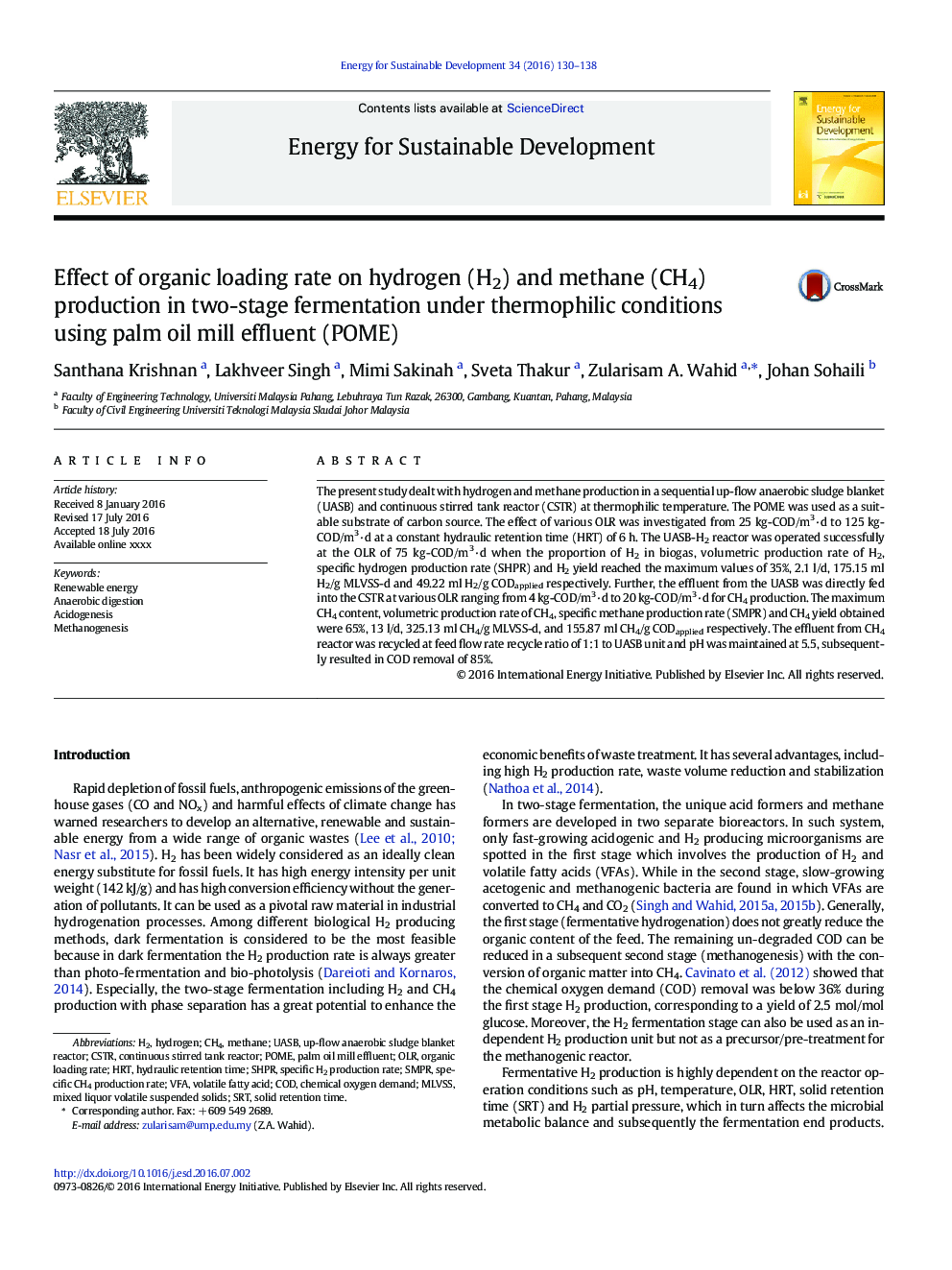| Article ID | Journal | Published Year | Pages | File Type |
|---|---|---|---|---|
| 7453763 | Energy for Sustainable Development | 2016 | 9 Pages |
Abstract
The present study dealt with hydrogen and methane production in a sequential up-flow anaerobic sludge blanket (UASB) and continuous stirred tank reactor (CSTR) at thermophilic temperature. The POME was used as a suitable substrate of carbon source. The effect of various OLR was investigated from 25 kg-COD/m3·d to 125 kg-COD/m3·d at a constant hydraulic retention time (HRT) of 6 h. The UASB-H2 reactor was operated successfully at the OLR of 75 kg-COD/m3·d when the proportion of H2 in biogas, volumetric production rate of H2, specific hydrogen production rate (SHPR) and H2 yield reached the maximum values of 35%, 2.1 l/d, 175.15 ml H2/g MLVSS-d and 49.22 ml H2/g CODapplied respectively. Further, the effluent from the UASB was directly fed into the CSTR at various OLR ranging from 4 kg-COD/m3·d to 20 kg-COD/m3·d for CH4 production. The maximum CH4 content, volumetric production rate of CH4, specific methane production rate (SMPR) and CH4 yield obtained were 65%, 13 l/d, 325.13 ml CH4/g MLVSS-d, and 155.87 ml CH4/g CODapplied respectively. The effluent from CH4 reactor was recycled at feed flow rate recycle ratio of 1:1 to UASB unit and pH was maintained at 5.5, subsequently resulted in COD removal of 85%.
Keywords
VFASMPRUp-flow anaerobic sludge blanket reactorsRTMLVSSUASBOLRHRTCSTRCH4volatile fatty acidAcidogenesisRenewable energychemical oxygen demandcontinuous stirred tank reactorSolid retention timehydraulic retention timePalm oil mill effluentMethaneMethanogenesismixed liquor volatile suspended solidsOrganic loading rateAnaerobic digestionHydrogenPOMECod
Related Topics
Physical Sciences and Engineering
Energy
Energy (General)
Authors
Santhana Krishnan, Lakhveer Singh, Mimi Sakinah, Sveta Thakur, Zularisam A. Wahid, Johan Sohaili,
